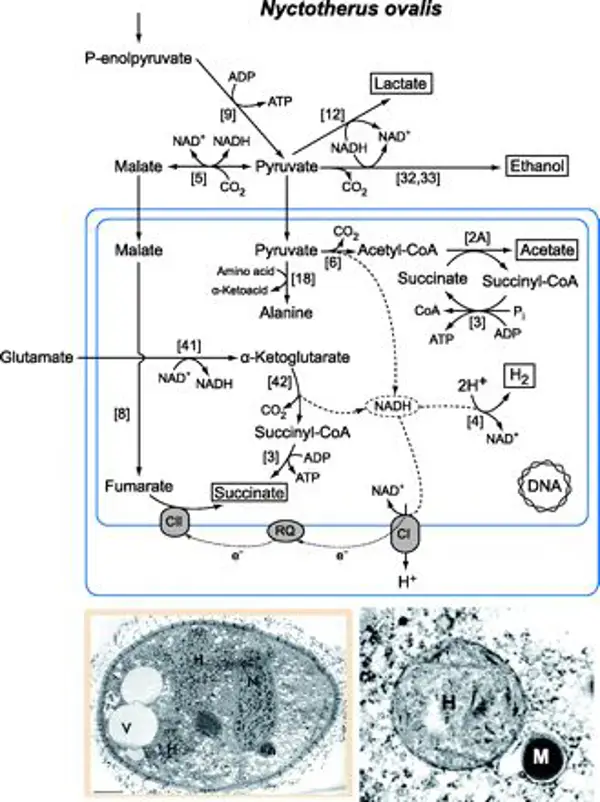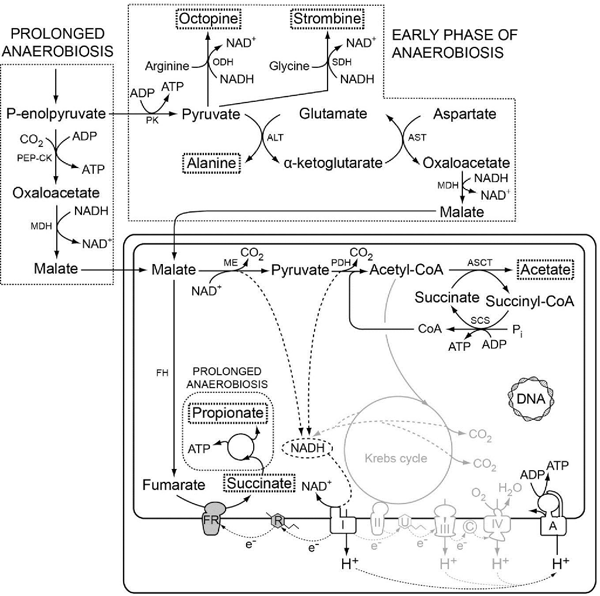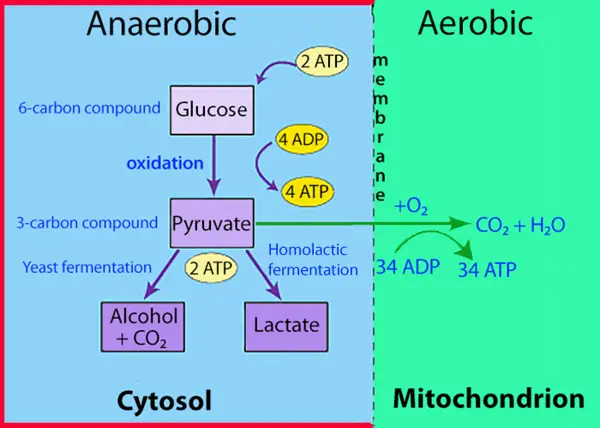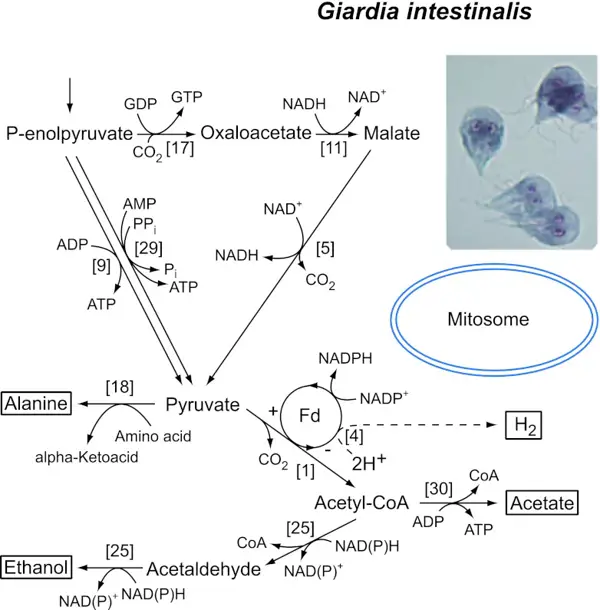In this article, we will delve into the fascinating world of anaerobic energy metabolism in eukaryotes, exploring the biochemistry and evolutionary pathways that have shaped this essential process.
Table of Contents:
- Introduction to Anaerobic Energy Metabolism
- Evolutionary Origins of Anaerobic Pathways
- Glycolysis and Fermentation in Eukaryotes
- Adaptations for Anaerobic Survival
- Comparison with Aerobic Energy Metabolism
- Regulation of Anaerobic Pathways
- Future Directions in Research
Introduction to Anaerobic Energy Metabolism
Anaerobic energy metabolism is a vital process that allows eukaryotic cells to generate ATP in the absence of oxygen. This pathway plays a crucial role in providing energy for various cellular functions, particularly in environments where oxygen levels are low.
Evolutionary Origins of Anaerobic Pathways
The evolution of anaerobic energy metabolism in eukaryotes can be traced back to ancient organisms that inhabited oxygen-poor environments. Through a series of evolutionary adaptations, eukaryotic cells have developed efficient pathways to sustain energy production without relying on oxygen.
Evolutionary studies suggest that anaerobic pathways have ancient origins and have played a crucial role in the evolution of life on Earth. Anaerobic metabolism, which allows organisms to produce energy in the absence of oxygen, likely emerged early in Earth's history when oxygen levels in the atmosphere were low.
One theory posits that anaerobic pathways evolved as a response to the changing environmental conditions on Earth, providing organisms with a way to survive in oxygen-deprived environments. These pathways allowed organisms to produce energy through processes such as fermentation and anaerobic respiration, which do not require oxygen as a final electron acceptor.
Evolution of Anaerobic Energy Metabolism in Eukaryotes
In eukaryotic cells, anaerobic energy metabolism has also played a significant role in evolution. Some eukaryotes, such as certain yeast and protists, are capable of performing anaerobic respiration to produce energy in the absence of oxygen. This ability may have provided an evolutionary advantage in environments where oxygen levels fluctuated or were limited.
Studies suggest that the evolution of anaerobic pathways in eukaryotes was a result of horizontal gene transfer and endosymbiosis events, where different organisms acquired genes or organelles that allowed them to carry out anaerobic metabolism. This adaptation likely enabled eukaryotes to colonize diverse habitats and survive in conditions where oxygen availability was scarce.

Glycolysis and Fermentation in Eukaryotes
One of the key pathways involved in anaerobic energy metabolism is glycolysis, which breaks down glucose to produce ATP. In the absence of oxygen, eukaryotic cells can also undergo fermentation to regenerate NAD+ and continue glycolysis.
Glycolysis is a metabolic pathway that takes place in the cytoplasm of eukaryotic cells and plays a key role in the production of ATP, the cell's main energy source. This process involves the breakdown of glucose into pyruvate, which can then be further metabolized in the presence of oxygen through aerobic respiration.
Fermentation, on the other hand, is an anaerobic process that occurs in the absence of oxygen. In eukaryotic cells, fermentation typically involves the conversion of pyruvate into lactate or ethanol, along with the regeneration of NAD+ to continue glycolysis. This allows cells to continue producing ATP in low-oxygen conditions.
The evolution of anaerobic energy metabolism in eukaryotes is believed to have arisen as a response to changing environmental conditions, such as periods of low oxygen availability. This adaptation has allowed organisms to survive and thrive in various habitats, showcasing the versatility of metabolic pathways in eukaryotic cells.

Adaptations for Anaerobic Survival
Eukaryotic cells have evolved various adaptations to thrive in anaerobic conditions, such as the development of specialized enzymes and metabolic pathways that can efficiently generate ATP without oxygen. These adaptations have enabled eukaryotes to survive in diverse environments.
In biochemistry, adaptations for anaerobic survival refer to the evolutionary processes that allow organisms to thrive in environments with little to no oxygen. These adaptations are crucial for the evolution of anaerobic energy metabolism in eukaryotes.
One such adaptation is the development of alternative metabolic pathways that can function without oxygen. For example, some organisms have evolved the ability to produce energy through processes such as fermentation or anaerobic respiration, which do not require oxygen as a final electron acceptor.
Additionally, anaerobic organisms may have specialized enzymes and proteins that allow them to survive and thrive in low oxygen environments. These adaptations have played a key role in the evolution of eukaryotic organisms, allowing them to occupy diverse ecological niches and adapt to changing environmental conditions.
Overall, the study of adaptations for anaerobic survival in biochemistry provides valuable insights into the evolution of anaerobic energy metabolism in eukaryotes, highlighting the importance of these adaptations for the survival and success of organisms in anaerobic environments.

Comparison with Aerobic Energy Metabolism
While aerobic energy metabolism is more efficient in generating ATP, anaerobic pathways play a critical role in providing energy during times of oxygen deprivation. Eukaryotic cells can switch between aerobic and anaerobic metabolism based on their environmental conditions.
In biochemistry, aerobic energy metabolism is the process by which organisms use oxygen to produce energy in the form of ATP. This process is highly efficient and is the primary source of energy for most eukaryotic organisms. On the other hand, anaerobic energy metabolism is a less efficient process that does not require oxygen and is typically used in situations where oxygen is not readily available.
The evolution of anaerobic energy metabolism in eukaryotes is believed to have occurred as a response to changing environmental conditions. It is thought that early eukaryotic organisms lacked the ability to produce energy using oxygen and therefore relied on anaerobic metabolism to survive. Over time, as oxygen became more abundant in the Earth's atmosphere, many eukaryotic organisms evolved to utilize aerobic metabolism as their primary source of energy.
Overall, the comparison between aerobic and controlling energy metabolism postmortem biochemistry highlights the importance of adaptation and evolution in organisms' ability to produce energy. While aerobic metabolism is more efficient, anaerobic metabolism is a crucial backup system that allows organisms to survive in oxygen-deprived environments.

Regulation of Anaerobic Pathways
The regulation of anaerobic energy metabolism in eukaryotes is tightly controlled by various factors, including gene expression, enzyme activity, and metabolic signaling pathways. Understanding these regulatory mechanisms is essential for deciphering the complexities of anaerobic metabolism.
Anaerobic pathways play a crucial role in the metabolism of organisms, particularly in the absence of oxygen. These pathways are essential for providing energy in low-oxygen environments.
One of the key regulators of anaerobic pathways is the enzyme phosphofructokinase, which is involved in glycolysis. This enzyme is responsible for catalyzing the conversion of fructose-6-phosphate to fructose-1,6-bisphosphate, a crucial step in the glycolytic pathway.
Another important regulator is the enzyme pyruvate kinase, which catalyzes the conversion of phosphoenolpyruvate to pyruvate. This step is essential for generating ATP in the absence of oxygen.
Evolution of Anaerobic Energy Metabolism in Eukaryotes
The evolution of anaerobic energy metabolism in eukaryotes has been a crucial adaptation for survival in low-oxygen environments. Eukaryotes have developed various anaerobic pathways, such as fermentation, to generate energy in the absence of oxygen.
One example of the evolution of anaerobic metabolism in eukaryotes is the development of mitochondria, which are essential for generating ATP through oxidative phosphorylation. However, in the absence of oxygen, eukaryotes can also utilize anaerobic pathways to generate energy.
Overall, the regulation of anaerobic pathways in biochemistry and the evolution of anaerobic energy metabolism in eukaryotes play a vital role in the survival and adaptation of organisms in low-oxygen environments.

Future Directions in Research
Ongoing research in the field of anaerobic energy metabolism is uncovering new insights into the evolution and biochemistry of these pathways. Future studies will likely focus on identifying novel enzymes, metabolic intermediates, and regulatory mechanisms that contribute to the efficiency of anaerobic metabolism in eukaryotes.
Research in biochemistry and evolution of anaerobic energy metabolism in eukaryotes is a rapidly evolving field with many exciting opportunities for future exploration. One key direction for future research is to further elucidate the mechanisms and pathways involved in anaerobic energy metabolism in eukaryotic organisms.
Additionally, understanding the evolutionary history and development of anaerobic energy metabolism in eukaryotes is essential for gaining insights into the adaptation and survival of organisms in low oxygen environments. Future research should focus on comparative genomics and evolutionary analyses to uncover the genetic basis of anaerobic energy metabolism in eukaryotes.
Advancements in technologies such as next-generation sequencing, metabolomics, and bioinformatics will be crucial for unlocking the complexities of anaerobic energy metabolism in eukaryotes. Collaborative research efforts and interdisciplinary approaches will also play a significant role in shaping the future of this field.
In conclusion, future directions in research in biochemistry and evolution of anaerobic energy metabolism in eukaryotes hold immense promise for uncovering new insights into the metabolic adaptations of organisms in diverse environments. Continued research in this area will not only enhance our understanding of eukaryotic metabolism but also provide valuable applications in biotechnology, medicine, and environmental science.

Key Takeaways:
- Anaerobic energy metabolism is essential for eukaryotic cells to generate ATP in oxygen-poor environments.
- The evolutionary origins of anaerobic pathways can be traced back to ancient organisms that adapted to low oxygen conditions.
- Glycolysis and fermentation are key pathways involved in anaerobic energy metabolism in eukaryotes.
- Eukaryotic cells have evolved adaptations to thrive in anaerobic environments and efficiently produce ATP.
- The regulation of anaerobic pathways in eukaryotes is complex and involves multiple levels of control.
FAQ:
Q: Can eukaryotic cells survive solely on anaerobic metabolism?
A: While eukaryotic cells can rely on anaerobic metabolism for energy production, sustained anaerobic conditions can have detrimental effects on cell function. Eukaryotes typically require a balance between aerobic and anaerobic metabolism for optimal cellular performance.



Recent Comments